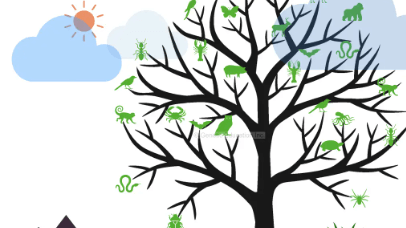Learning Through Art: Constructing a Phylogenetic Tree

The integration of artistic methods into the study of phylogenetics presents a compelling opportunity to deepen our understanding of evolutionary relationships. By employing visual techniques such as infographics and detailed illustrations, educators can transform abstract biological concepts into tangible, engaging narratives. This approach not only facilitates comprehension but also encourages critical engagement with the subject matter. As we explore the intersection of art and science, one must consider how these creative expressions can reshape our perceptions of life’s intricate connections and what implications this has for future educational practices.
The Importance of Phylogenetic Trees
Phylogenetic trees serve as crucial tools in understanding the evolutionary relationships among various species.
They provide a visual representation of how different organisms are connected through common ancestry, illustrating the divergence and convergence of lineages over time.
See also: Julia C. Fischer How to Speak Art: Understanding Its Language, Issues, and Themes
Integrating Art With Science
The intersection of art and science has long been a fertile ground for innovation and understanding, particularly in the realm of constructing phylogenetic trees.
Through artistic interpretation, scientists can engage a broader audience, transforming complex data into compelling visual storytelling.
This integration not only enhances comprehension but also inspires curiosity, fostering an appreciation for the intricate relationships that define the tree of life.
Techniques for Artistic Representation
Artistic representation of phylogenetic relationships can take many forms, each offering unique advantages for conveying complex biological concepts.
Techniques such as infographics, illustrations, and 3D models enable visual storytelling that captivates audiences.
By embracing creative expression, artists can transform intricate data into accessible representations, fostering a deeper understanding of evolutionary connections.
These methods enhance engagement, making science both informative and visually appealing.
Benefits of Learning Through Art
Harnessing the power of artistic expression in education can significantly enhance the learning experience.
Engaging in creative expression through visual storytelling allows learners to grasp complex concepts, such as those found in phylogenetics, in an accessible manner. This approach fosters critical thinking and retention, enabling students to connect with the material on a deeper level while encouraging individuality and freedom of thought.
Conclusion
In the intersection of art and science lies a transformative potential, where the creation of phylogenetic trees becomes more than mere representation; it evolves into a compelling narrative of life’s complexity. As students engage in this artistic endeavor, they uncover hidden connections and untold stories within the tapestry of evolution. The question remains: what wonders await those who dare to explore this captivating blend of creativity and inquiry? The journey of discovery has only just begun.




